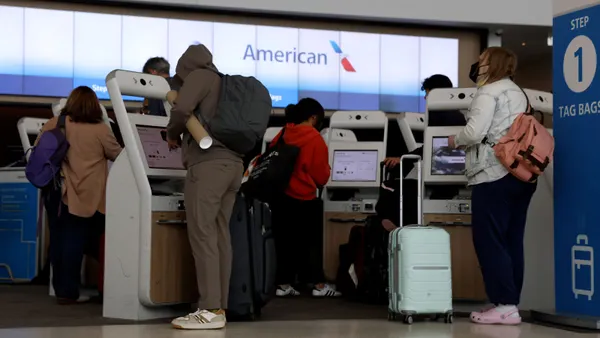Update: Slack's shares closed at $38.62, a 48.5% jump above its reference price of $26. The sizeable pop puts Slack's market cap at $19 billion.
Dive Brief:
- Shares of Slack went live on the New York Stock Exchange on Thursday, foregoing a traditional initial public offering (IPO). The company listed its shares directly rather than using an underwriter, much like streaming front runner Spotify did in April.
- Initial market reaction to the company's listing was positive. Share prices jumped from the initial $26 reference price offered by NYSE to a $33 bid price.
Congratulations to @SlackHQ as they celebrate their IPO Day https://t.co/0unLbY036H
— NYSE - We Are Living Tech (@NYSE) June 20, 2019
- The San Francisco company enters the public market amid a quest for profitability. In the 2019 fiscal year it had $138 million in losses on $400 million revenue, according to the S-1 form filed with the Securities and Exchange Commission.
Dive Insight:
Slack's direct listing gives it two critical advantages: It lets the founding team retain control of the company while saving sizable underwriting fees to firms like Morgan Stanley or Goldman Sachs.
With the clanging of opening bell still ringing in their ears, Slack's top brass must now lay out their long-term strategy in the collaboration software, where it faces pressure from companies like Microsoft and Facebook.
"The key thing is retaining control," said Bob Pozen, a senior lecturer at MIT's Sloan School of Management, in an interview with CIO Dive. "If the founders retain the majority of shares they can take a long-term approach."
By not issuing new shares, but simply putting existing stock on the market, the company is more likely to keep voting control, which in turn shields it from proxy wars or activist investors.
As markets continue to size-up the company's long-term potential, the numbers to watch will be Slack's paying enterprise customers, particularly those who represent more than $100,000 in annual recurring revenue.
In the 2019 fiscal year, the company said it had 88,000 paying customers, but only 575 of them were on that higher range.














